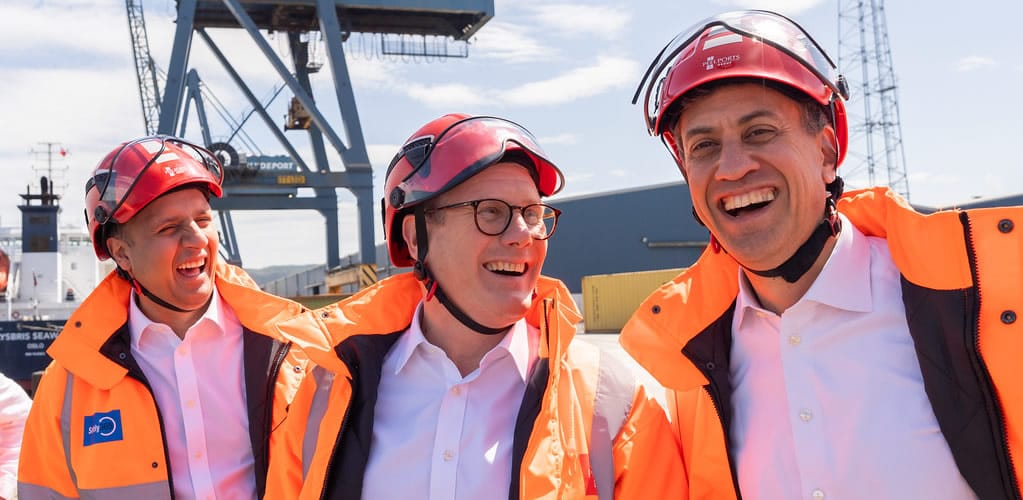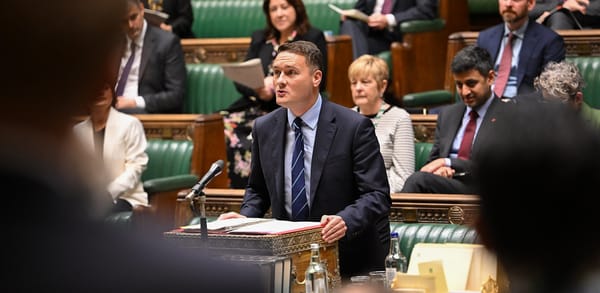What we know so far about Labour’s plan for Great British Energy
Labour’s energy plan includes Great British Energy, aiming to reduce bills, boost energy security, and create jobs. Focused on renewables and energy efficiency, it avoids nationalisation, stressing investment in local and future energy sources.

T he Labour Party has announced its plans for the energy sector, closing off the first full week of the 2024 election campaign.
Great British Energy is one of Keir Starmer’s six first steps for government, should his party win the election. This is branded as a strategy to reduce energy bills, foster energy security and create new jobs. It could equally be described as Starmer’s attempt to drum up support for the energy transition on a very tight budget.
Since the full-scale invasion of Ukraine by Russia, European consumers have seen the price of their energy bills skyrocket. Then, over time, we have transitioned away from dependency to Russian oil and gas, and prices have slowly gone down.
In the UK, private companies buy and trade energy at the market price. This price is determined by the most expensive unit sold. Liquid Natural Gas (LNG) imported from abroad determines the price of gas. The most expensive plant – most of the time powered by gas – determines the price of electricity.
One main reason why prices have decreased from their 2022 peak is the fact that they increased so much in the first place. Because gas and electricity were sold at such a high price, every energy and gas producer wanted to sell in Europe, and develop new ways of doing so. Eventually so many did that there was enough supply to bring prices down.
When the price of the most expensive unit is very high, however, there are complaints that some producers make “windfall gains”. For instance, North Sea gas is very cheap to produce and can be sold at the same very expensive price as imported LNG produced via fracking in Texas. This leads to huge profit for those firms – difficult to justify to families struggling with their everyday needs. The same applies for old nuclear power plants, where production costs are low. For this reason, many have called for the UK to take back control of all energy production.
In France, the national electricity provider EDF manages almost all of the country’s power plants, and can redistribute discounted electricity to protect consumers when prices are high. But this also means that the government must make all the investments and does not benefit in good times. While all other energy companies were making billions, France’s EDF made huge losses in 2022 and only returned to profit in 2023.
Having a national energy provider also means taking all the risk. EDF lost a lot of money building nuclear power plants at a cost much higher than expected, including in the UK. When Hinkley Point C nuclear power station starts producing energy, British consumers will benefit from the £13bn loss made by the French company that built it. In the UK, the government is not ready to take such risks, and will only push forward future projects if it finds investors happy to do so.
Great British Energy
But Labour’s plan for a Great British Energy does not mean having a national provider of the type of EDF. Given the current cost of borrowing money, it does not want to pledge the huge amounts that would be needed to buy back the very profitable gas fields of the North Sea or the existing power plants. The goal is instead to put together various different aspects of energy production and consumption under one umbrella.
To decrease energy prices, Labour wants to invest in decreasing consumption, by providing more grants for insulating houses.
It also wants to give funding to local authorities to invest in renewable energy projects. Everywhere in England, projects for wind turbines or solar farms face backlash from local residents who see little interest in them. But what if the energy production directly benefited the community? A wind turbine that lowers your council tax bill might be easier to accept.
Meanwhile, a major problem with new renewable projects is that they need to be connected to the UK electricity grid, which takes time and money – and lack of investment means access to new sources of electricity can often be delayed. This is something Labour wants to invest in.
The government is also uniquely placed to invest in the sources of energy of the future that are not yet fully commercialised. The current government estimates for instance that the UK has 50% of Europe’s tidal energy resources – making electricity from tidal waves. This has the potential to meet 20% of the country’s current electricity demand. And because it is so uniquely positioned to benefit from it, the UK could become a world leader in this technology instead of relying on imports.
Keir Starmer unveils logo of Great British Energy https://t.co/LENSEbykfh
— John Stevens (@johnestevens) May 30, 2024
Some of the money to pay for all this will come from existing pots of money used to reach similar objectives. Other funds will come from increasing the windfall taxes on the profits made by energy companies, which have already been imposed by the current government.
Starmer’s plan for a Great British Energy can easily be derided as “just a logo”. There is certainly some truth in that. Many aspects of the plans are actually reminiscent of the UK net-zero strategy developed during the Boris Johnson government.
Yet, by putting together the different elements needed for the energy transition in one place, a Labour government might be able to make a consistent case to the public about the transition to net zero. Only by investing collectively in the future of energy can the UK reap the benefits from it. Otherwise, the country will remain at the mercy of events out of our control, such as war and the whims of faraway dictatorships.

Sources:
▪ This piece was originally published in The Conversation and re-published in PUBLIC SQUARE UK on 2 June 2024. | The author writes in a personal capacity.
▪ Cover: Flickr/Number 10. (Licensed under a Creative Commons Attribution-ShareAlike 4.0 International License.)






[Read our Comments Guidelines]